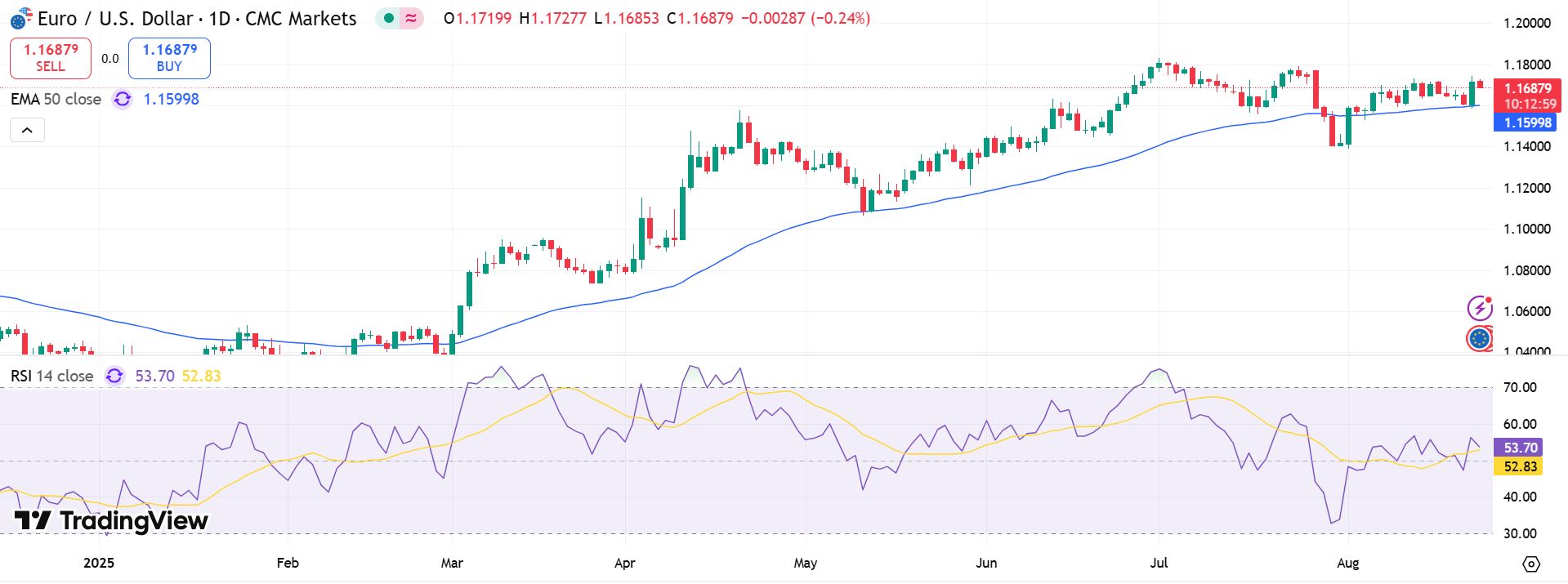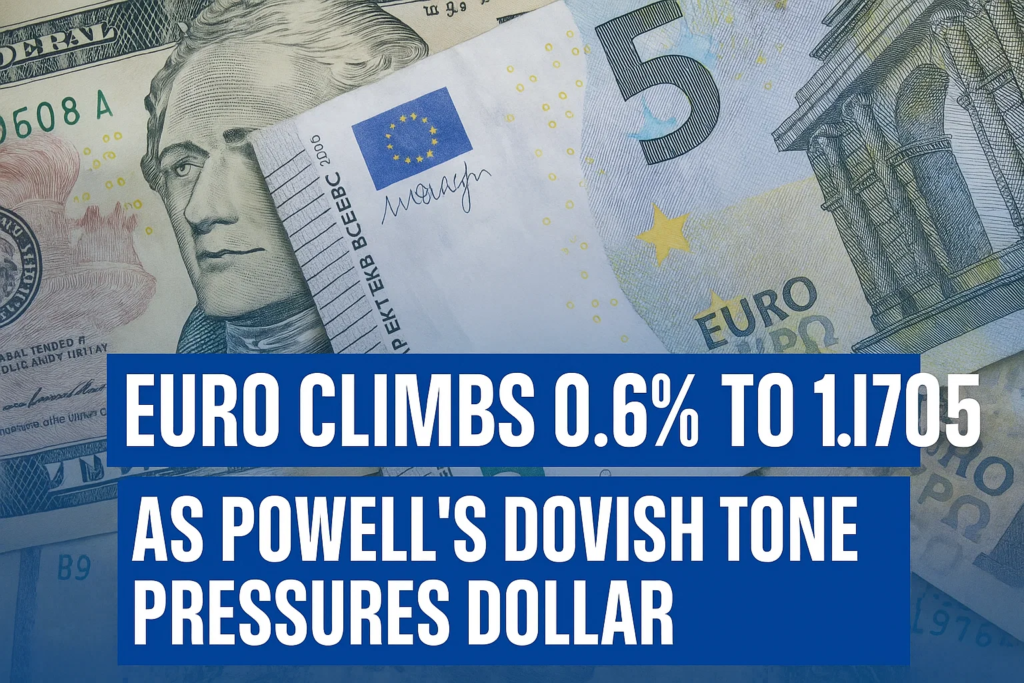The euro advanced on Friday, lifting EUR/USD 0.6% to 1.1705 in the American session after Federal Reserve Chair Jerome Powell signaled a dovish tilt at Jackson Hole. The U.S. dollar weakened broadly, allowing the pair to cross the 1.1700 psychological threshold.
Powell acknowledged rising risks in the labor market, reinforcing expectations that the Fed may consider easing rates as early as September. Traders responded by selling dollars, while the euro gained on renewed bullish momentum.
Still, technical indicators suggest lingering caution. The Relative Strength Index (RSI) on the 4-hour chart remains below 40, while the pair trades under both its 100- and 200-period Simple Moving Averages (SMA)—a setup that reflects a broadly bearish stance despite Friday’s rebound.
US PMI Data Tests Fed Rate-Cut Outlook
The dollar had strengthened earlier in the week after upbeat U.S. economic data. The S&P Global Composite PMI rose to 55.4 in August, up from 55.1 in July, marking continued private-sector expansion.
Chris Williamson, Chief Business Economist at S&P Global Market Intelligence, noted that “the rise in selling prices for goods and services suggests inflation will climb further above the Fed’s 2% target.” He added that higher activity and hiring trends point more toward rate hikes rather than cuts, based on historical patterns.
As a result, market expectations for a September Fed cut narrowed. CME FedWatch Tool data showed the probability of a 25 basis-point reduction slipping to 73%, down from 84% before the PMI release.
Key developments this week:
- PMI rose to 55.4, signaling stronger growth.
- Inflation signals reinforced policy caution.
- Fed rate-cut probability dropped from 84% to 73%.
Powell’s Speech Sets the Tone
Markets now await Powell’s next remarks at the Jackson Hole Symposium, where he is scheduled to discuss the economic outlook and policy framework. His tone could determine whether the dollar extends its rebound or resumes weakening.

If Powell downplays weak July employment data and stresses inflation risks, the dollar may gather strength into the weekend. But if he signals openness to rate cuts in response to labor market softness, the euro could sustain momentum above 1.1700, with resistance eyed at 1.1625, 1.1645, and 1.1700 levels.
For now, EUR/USD remains delicately balanced—supported by Powell’s dovish tilt but constrained by technical barriers and resilient U.S. data.


